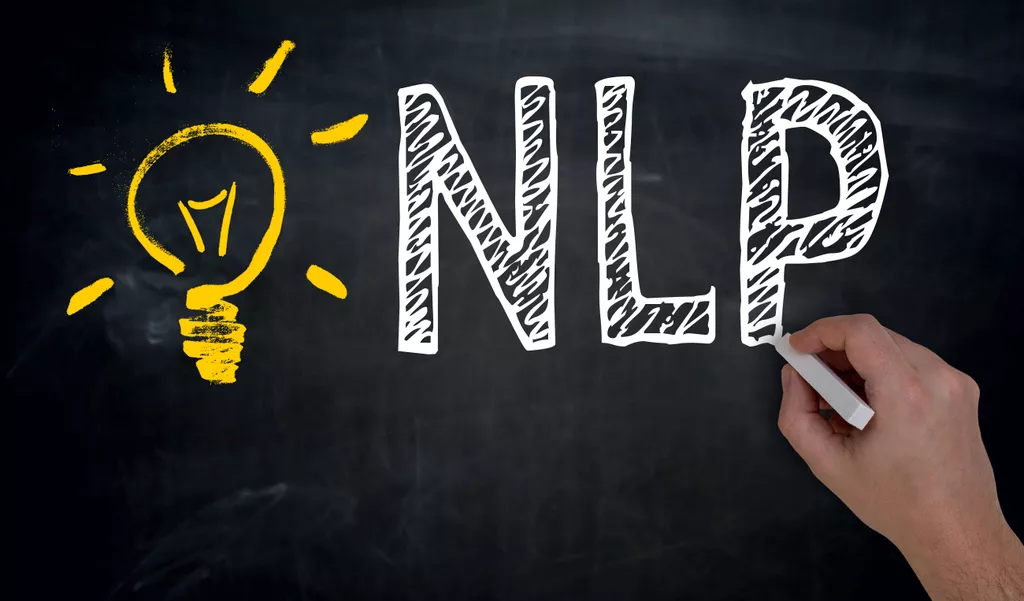Now that we understand the distinction between training and inference, we can more concretely define what we will be working on today. In other words, we would not be going through the expensive process of training any new models here. On the other hand, we are going to leverage the myriad of existing pre-trained models in the Hugging Face Hub and use those for inference (i.e. to make predictions). Data privacy is a serious issue that arises in data collection, especially when it comes to social media listening and analysis. Even as we grow in our ability to extract vital information from big data, the scientific community still faces roadblocks that pose major data mining challenges.
This involves having users query data sets in the form of a question that they might pose to another person. The machine interprets the important elements of the human language sentence, which correspond to specific features in a data set, and returns an answer. Training state-of-the-art NLP models such as transformers through standard pre-training methods requires metadialog.com large amounts of both unlabeled and labeled training data. Limited adoption of NLP techniques in the humanitarian sector is arguably motivated by a number of factors. First, high-performing NLP methods for unstructured text analysis are relatively new and rapidly evolving (Min et al., 2021), and their potential may not be entirely known to humanitarians.
Clinical case study
Earlier machine learning techniques such as Naïve Bayes, HMM etc. were majorly used for NLP but by the end of 2010, neural networks transformed and enhanced NLP tasks by learning multilevel features. Major use of neural networks in NLP is observed for word embedding where words are represented in the form of vectors. Initially focus was on feedforward [49] and CNN (convolutional neural network) architecture [69] but later researchers adopted recurrent neural networks to capture the context of a word with respect to surrounding words of a sentence. LSTM (Long Short-Term Memory), a variant of RNN, is used in various tasks such as word prediction, and sentence topic prediction. [47] In order to observe the word arrangement in forward and backward direction, bi-directional LSTM is explored by researchers [59]. In case of machine translation, encoder-decoder architecture is used where dimensionality of input and output vector is not known.
- There have been a number of community-driven efforts to develop datasets and models for low-resource languages which can be used a model for future efforts.
- The aim of this paper is to describe our work on the project “Greek into Arabic”, in which we faced some problems of ambiguity inherent to the Arabic language.
- Word vectorization is an NLP process that converts individual words into vectors and enables words with the same meaning to have the same representation.
- Through a combination of your data assets and open datasets, train a model for the needs of specific sectors or divisions.
- You can extract all the data into a structured, machine-readable JSON format with parsed tasks, descriptions and SOTA tables.
- It will help researchers and developers to better understand human emotions and develop applications that can recognize emotions in speech.
Storing copious amounts of data on a single server is not feasible, which is why data is stored on local servers. In fact, it is something we ourselves faced while data munging for an international health care provider for sentiment analysis. NLP is a field of linguistics and machine learning focused on understanding everything related to human language. The aim of NLP tasks is not only to understand single words individually, but to be able to understand the context of those words.
What Are the Potential Pitfalls of Implementing NLP in Your Business?
The lexicon is built and updated manually and contains 76,000 fully vowelized lemmas. It is then inflected by means of finite-state transducers (FSTs), generating 6 million forms. The coverage of these inflected forms is extended by formalized grammars, which accurately describe agglutinations around a core verb, noun, adjective or preposition.
This technology is also the driving force behind building an AI assistant, which can help automate many healthcare tasks, from clinical documentation to automated medical diagnosis. NLP machine learning can be put to work to analyze massive amounts of text in real time for previously unattainable insights. Informal phrases, expressions, idioms, and culture-specific lingo present a number of problems for NLP – especially for models intended for broad use. Because as formal language, colloquialisms may have no “dictionary definition” at all, and these expressions may even have different meanings in different geographic areas. Furthermore, cultural slang is constantly morphing and expanding, so new words pop up every day.
Table of Contents
— This paper presents a rule based approach simulating the shallow parsing technique for detecting the Case Ending diacritics for Modern Standard Arabic Texts. An Arabic annotated corpus of 550,000 words is used; the International Corpus of Arabic (ICA) for extracting the Arabic linguistic rules, validating the system and testing process. The output results and limitations of the system are reviewed and the Syntactic Word Error Rate (WER) has been chosen to evaluate the system. The results of the current proposed system have been evaluated in comparison with the results of the best-known systems in the literature.
Why NLP is harder than computer vision?
NLP is language-specific, but CV is not.
Different languages have different vocabulary and grammar. It is not possible to train one ML model to fit all languages. However, computer vision is much easier. Take pedestrian detection, for example.
To overcome this challenge, organizations can use techniques such as model debugging and explainable AI. Finally, NLP is a rapidly evolving field and businesses need to keep up with the latest developments in order to remain competitive. This can be challenging for businesses that don’t have the resources or expertise to stay up to date with the latest developments in NLP.
LinkOut – more resources
While there are still many challenges in NLP, the future looks promising, with improvements in accuracy, multilingualism, and personalization expected. As NLP becomes more integrated into our lives, it is important to consider ethical considerations such as privacy, bias, and data protection. Information in documents is usually a combination of natural language and semi-structured data in forms of tables, diagrams, symbols, and on. A human inherently reads and understands text regardless of its structure and the way it is represented.
What are the challenges of machine translation in NLP?
- Quality Issues. Quality issues are perhaps the biggest problems you will encounter when using machine translation.
- Can't Receive Feedback or Collaboration.
- Lack of Sensitivity To Culture.
- Conclusion.
In healthcare, this can lead to inaccurate diagnoses or treatments, particularly for underrepresented or marginalized groups. The algorithms should be created free from bias and reflect the diversity of patient populations. The same words and phrases can have different meanings according the context of a sentence and many words – especially in English – have the exact same pronunciation but totally different meanings. Give this NLP sentiment analyzer a spin to see how NLP automatically understands and analyzes sentiments in text (Positive, Neutral, Negative). In BOW, the size of the vector is equal to the number of elements in the vocabulary. If most of the values in the vector are zero then the bag of words will be a sparse matrix.
Constructing a disease database and using natural language processing to capture and standardize free text clinical information
Overcoming these challenges and enabling large-scale adoption of NLP techniques in the humanitarian response cycle is not simply a matter of scaling technical efforts. To encourage this dialogue and support the emergence of an impact-driven humanitarian NLP community, this paper provides a concise, pragmatically-minded primer to the emerging field of humanitarian NLP. As companies grasp unstructured data’s value and AI-based solutions to monetize it, the natural language processing market, as a subfield of AI, continues to grow rapidly.

Natural language is challenging to comprehend, which makes NLP a challenging task. Mastering a language is easy for humans, but implementing NLP becomes difficult for machines because of the ambiguity and imprecision of natural language. The last use case I wanted to illustrate, and it’s going to be my last point, is due diligence in private equity.
Domain-specific knowledge
First, we provide a short primer to NLP (Section 2), and introduce foundational principles and defining features of the humanitarian world (Section 3). Secondly, we provide concrete examples of how NLP technology could support and benefit humanitarian action (Section 4). As we highlight in Section 4, lack of domain-specific large-scale datasets and technical standards is one of the main bottlenecks to large-scale adoption of NLP in the sector. This is why, in Section 5, we describe The Data Entry and Exploration Platform (DEEP2), a recent initiative (involving authors of the present paper) aimed at addressing these gaps. Instead, it requires assistive technologies like neural networking and deep learning to evolve into something path-breaking. Adding customized algorithms to specific NLP implementations is a great way to design custom models—a hack that is often shot down due to the lack of adequate research and development tools.
- This heading has the list of NLP projects that you can work on easily as the datasets for them are open-source.
- There are words that lack standard dictionary references but might still be relevant to a specific audience set.
- Developing labeled datasets to train and benchmark models on domain-specific supervised tasks is also an essential next step.
- According to the IBM market survey, 52% of global IT professionals reported using or planning to use NLP to improve customer experience.
- For the unversed, NLP is a subfield of Artificial Intelligence capable of breaking down human language and feeding the tenets of the same to the intelligent models.
- This is mostly because big data comes from different sources, may be automatically accumulated or manual, and can be subject to various handlers.
Natural language is often ambiguous and context-dependent, making it difficult for machines to accurately interpret and respond to user requests. Brown, T., Mann, B., Ryder, N., Subbiah, M., Kaplan, J. D., Dhariwal, P., et al. (2020). “Language models are few-shot learners,” in Advances in Neural Information Processing Systems 33 (NeurIPS 2020), (Online). Participatory events such as workshops and hackathons are one practical solution to encourage cross-functional synergies and attract mixed groups of contributors from the humanitarian sector, academia, and beyond. In highly multidisciplinary sectors of science, regular hackathons have been extremely successful in fostering innovation (Craddock et al., 2016). Major NLP conferences also support workshops on emerging areas of basic and applied NLP research.
How does natural language processing work?
It has seen a great deal of advancements in recent years and has a number of applications in the business and consumer world. However, it is important to understand the complexities and challenges of this technology in order to make the most of its potential. One of the biggest challenges is that NLP systems are often limited by their lack of understanding of the context in which language is used. For example, a machine may not be able to understand the nuances of sarcasm or humor.
- This technique is used in spam filtering, sentiment analysis, and content categorization.
- Natural language is often ambiguous and context-dependent, making it difficult for machines to accurately interpret and respond to user requests.
- For this specific task, we will first use a text-to-text pre-rained model from Google named T5 to summarize the description that we just read about “Text Summarization” in the section above.
- But deep learning is a more flexible, intuitive approach in which algorithms learn to identify speakers’ intent from many examples — almost like how a child would learn human language.
- NLP tools can identify key medical concepts and extract relevant information such as symptoms, diagnoses, treatments, and outcomes.
- The method involves iteration over a corpus of text to learn the association between the words.
Deep learning, when combined with other technologies (reinforcement learning, inference, knowledge), may further push the frontier of the field. There are challenges of deep learning that are more common, such as lack of theoretical foundation, lack of interpretability of model, and requirement of a large amount of data and powerful computing resources. There are also challenges that are more unique to natural language processing, namely difficulty in dealing with long tail, incapability of directly handling symbols, and ineffectiveness at inference and decision making.

Awareness of these issues is growing at a fast pace in the NLP community, and research in these domains is delivering important progress. Sources feeding into needs assessments can range from qualitative interviews with affected populations to remote sensing data or aerial footage. Needs assessment methodologies are to date loosely standardized, which is in part inevitable, given the heterogeneity of crisis contexts.
What are the main challenges of neural networks?
One of the main challenges of neural networks and deep learning is the need for large amounts of data and computational resources. Neural networks learn from data by adjusting their parameters to minimize a loss function, which measures how well they fit the data.




